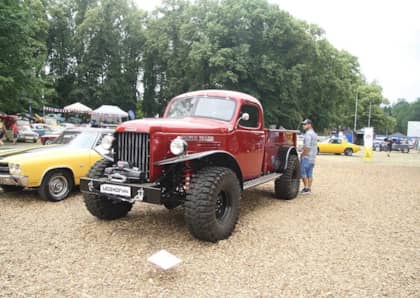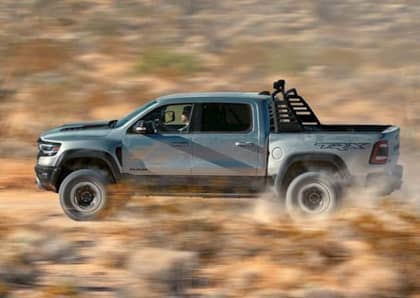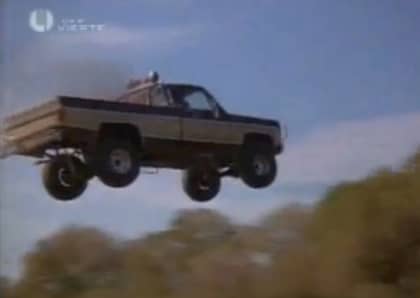Uncommon Haulers: 1972-1980 Dodge D Series Pickup Trucks
Pickups are gradually emerging from the shadow of muscle cars and becoming truly collectible. With so many hundreds of thousands of these work-oriented steeds having been built, prices generally remain affordable, and the Lego-like nature of their features and options also allows for quick and easy customization for buyers seeking to build a fun daily driver from a classic truck.
Still, not all brands have seen the same spotlight shone on their efforts. While Ford, Chevrolet and, to a lesser extent, even GMC attract attention on the pickup scene, Dodge has been left wandering the wilderness. This presents a real opportunity for Mopar fans to scoop up the third-generation D Series pickup, a modern and competitive alternative from a Big Three builder.
Future-Looking Features
When the D Series was redesigned for 1972, Dodge was intent on following the same path towards comfort and convenience that its rivals had also started down just a few years earlier. This was a pivotal era for pickups, with the realization that more and more buyers weren't just bouncing through farm fields or abusing them on construction sites. They also wanted something they could drive to and from work without having to deal with agrarian crudeness.

The list of changes Dodge made to the D Series formula was extensive, and included both wholesale mechanical upgrades as well as smaller but compelling features that could be added together to create a more pleasant overall experience from behind the wheel.
The new trucks were wider and longer, which helped reduce bouncing over bumps while unladen, and also improved stability at speed. Further enhancing handling was the move to coil springs up front for the D Series' newly introduced independent front suspension (although four-wheel drive "Power Wagon" models retained a solid front axle). Brakes were better, too—you could now order the D Series with power discs, and larger hardware was installed at all four corners regardless of spec—and equipment such as cruise control were made available for the first time.
Along with its increased track and wheelbase, Dodge afforded the D Series with a larger passenger cabin that finally featured niceties such as proper sun visors, actual sound insulation and air conditioning. These items had been taken for granted for years in the passenger car market, but were only just starting to pop up in pickups. Dodge was also one of the first truck makers to introduce an extended cab model (called the Club Cab) that allowed for extra passengers to squeeze in behind the front row on tiny fold-down jump seats (when that area wasn't being used to haul cargo).
Big Blocks, Slant Sixes
A range of engine choices were available with the 1972-1980 Dodge D Series. Stalwarts like the Chrysler slant six could be found in 170 ci and 225 ci varieties, while a 160hp 318 CID V8 and a 360 CID V8 good for 180hp were the most common drivetrains. Towards the end of the decade, a rare Mitsubishi-sourced six-cylinder diesel (105 horsepower, 169 lb-ft of torque) also put in an appearance.

The low overall output of the D Series drivetrains reflected the fact that the third-generation D Series was looking the EPA and energy crisis era square in the face. That didn't stop Dodge from trying to push power through to its pickup buyers in the form of optional 400 ci (200hp) and 440 ci (255hp) engines.
The latter big block was often found under the hoods of the numerous special edition performance trucks that Dodge introduced in a bid to keep people interested in what had become a lackluster automotive landscape. The most famous of these was the Lil' Red Express, a flareside shortbed equipped with dual exhaust stacks and a wooden cargo box, although this model would be joined by vehicles like the Macho, the Warlock and the Midnite Express. Quick by the standards of their era, these trucks have gathered a cult following based on their unique style as well as how easily their pollution control-choked motors can be cleaned up for bigger power.

Too Plain? Not at All
If there's one thing in particular that's held back the 1972-1980 Dodge D Series from enjoying the same interest level as its Detroit brethren (aside from somewhat lower production numbers), it's styling. Unlike Chevy's move from the classic '67-72 C10 to the slab-sided model that followed it, or Ford's big-then-bigger designs that evolved throughout the 1970s, the D Series remained largely the same throughout not just its third-generation run, but the redesign that would carry it from 1981-1993. This glutted the market with look-same, modestly-shaped trucks that, aside from the Lil' Red Express & Co., didn't have the same personality as competitors from the same era.

If you dare to be different, however, the D Series provides good value as a classic truck you can drive comfortably in modern traffic. Parts might be a little harder to find, and you won't have nearly the same aftermarket support as you would while wearing a Bowtie, but don't let that discourage you from taking a chance on this overlooked pickup contender.











